Not Updated For Current Season
This guide has not yet been updated for the current season. Please keep this in mind while reading. You can see the most recently updated guides on the browse guides page
x
x
Did this guide help you? If so please give them a vote or leave a comment.
You can even win prizes by doing so!
Vote
Comment
I liked this Guide

I didn't like this Guide

 Thank You!
Thank You!
Your votes and comments encourage our guide authors to continue
creating helpful guides for the League of Legends community.
Choose Champion Build:
-
Standard Aggro Bard
-
Tank Bard
-
AP Bard
-
SEE CHAMPION MATCHUPS (ignore
Recommended Items
Spells:

Flash

Ignite
Items
Ability Order

Traveler's Call (PASSIVE)
Bard Passive Ability
Introduction
I typically play ranked at the beginning of each season enough to get to gold (for the free skin), after which I switch to the comparatively stress-free gaming of normals, though I sometimes wonder just how far I could climb...
I was Gold 3 last season, stopped ranked at gold 5 this season, and Bard has been my main for some time. Bard is a mid/late-game champ that only gets better the longer the game goes on. While his early game is his weakest phase of the game, he has extremely strong harass during the lane that can allow him to excel there, too. His kit is one of the best for peeling, as well as initiating fights. He is also one of the best champions for chasing AND escaping. Bard is a support that can seriously be the carry in a game, even without the killing sprees.
|
Pros:
|
Cons:
|
|
There are two mastery buildpaths I use on Bard, depending on whether I am playing aggressively, or playing for Tank, and they're very similar.


This one is obvious: Bard roams a lot, and movement speed helps one do this faster, thus losing out on xp and money less.
Another obvious one. Bard is a support, and will not be assassinating people or getting jungle buffs, usually. The HP potion buff boosts our sustain.
Bard wants mana in order to better spam spells across all stages of the game. Bard is not a damage carry: his damage is fantastic, but secondary in focus to the utility Bard provides (which needs spells).
Early game, one of the most important goals Bard has is money generation, in order to better scale faster. Bandit offers money generation. Therefore, Bandit. Bard has enough mana and HP sustain.
The faster Bard can cast spells, the more utility he can provide his team. Bard doesn't build damage, and so the penetration would be largely useless.
[center
[/center]
While Bard could easily chunk a squishy carry late game, that would only ever happen late game, making Stormraider's Surge
useless until then- and most importantly, it encourages
Stormraider's Surge
useless until then- and most importantly, it encourages  Bard to be focusing on killing opponents, whereas you ought to be focusing on enabling team members to kill/not-be-killed instead.
Bard to be focusing on killing opponents, whereas you ought to be focusing on enabling team members to kill/not-be-killed instead.
 Windspeaker's Blessing
COULD work, but Bard's healing is mediocre across most stages of the game, and that would be your only way to proc Windspeaker's. By comparison, since a single meep-buffed Autoattack counts as two hits for
Windspeaker's Blessing
COULD work, but Bard's healing is mediocre across most stages of the game, and that would be your only way to proc Windspeaker's. By comparison, since a single meep-buffed Autoattack counts as two hits for
 Thunderlord's Decree
, proccing the damage is easy for Bard (and late game, this damage is rather significant). Couple that with
Thunderlord's Decree
, proccing the damage is easy for Bard (and late game, this damage is rather significant). Couple that with  Bard's typically aggressive lane, and Thunderlord's is the way to go.
Bard's typically aggressive lane, and Thunderlord's is the way to go.


We maximize as much HP regeneration as possible, as all of the stacking HP regen together makes up Bard's early game sustain.
Bard's early game sustain.
Tough Skin provides a minor defensive bonus, but with the health and regen Bard will start the game with (per these runes/masteries), the 2 damage defense is not needed. Comparatively, Bard's movement speed is one of his primary statistics, and so Explorer is where we go here.
Again, we want to stack as much HP regeneration as possible for our lane sustain: restoring 5 HP per second goes much further than an extra base 45 health.
This one is a very tough choice. Summoner spells are never not useful. However, as sustain is what minimizes Bard's otherwise lackluster lane, I tend to go for Perseverance. That said, either can work, and both are viable.
Perseverance. That said, either can work, and both are viable.
An extra potential 15 armor/magic resist is decent, however I'd much rather shrug off enemy CC so that I can go where I need to, when I need to, whether it be peeling or chasing or escaping. Of course, 15% isn't exactly "shrugging off" cc, but it's better than 0%.
I could easily see a good argument for all three of these. I used to run Grasp of the Undying because it is the only one of the three keystones that has any aggressive use, and I tend to play
Grasp of the Undying because it is the only one of the three keystones that has any aggressive use, and I tend to play  Bard very aggressively. However, if you are running a defensive keystone, it is because you are running a TankBard build- in which case surviveability is far more important than harass. I now suggest
Bard very aggressively. However, if you are running a defensive keystone, it is because you are running a TankBard build- in which case surviveability is far more important than harass. I now suggest
 Strength of the Ages
, as it provides the greatest passive defence/surviveability in conjunction with your items and runes/masteries.
Strength of the Ages
, as it provides the greatest passive defence/surviveability in conjunction with your items and runes/masteries.

The Cunning Tree

This one is obvious: Bard roams a lot, and movement speed helps one do this faster, thus losing out on xp and money less.
Another obvious one. Bard is a support, and will not be assassinating people or getting jungle buffs, usually. The HP potion buff boosts our sustain.
Bard wants mana in order to better spam spells across all stages of the game. Bard is not a damage carry: his damage is fantastic, but secondary in focus to the utility Bard provides (which needs spells).
Early game, one of the most important goals Bard has is money generation, in order to better scale faster. Bandit offers money generation. Therefore, Bandit. Bard has enough mana and HP sustain.
The faster Bard can cast spells, the more utility he can provide his team. Bard doesn't build damage, and so the penetration would be largely useless.
[center

|
or
|
or
|
While Bard could easily chunk a squishy carry late game, that would only ever happen late game, making

The Resolve Tree

We maximize as much HP regeneration as possible, as all of the stacking HP regen together makes up
Tough Skin provides a minor defensive bonus, but with the health and regen Bard will start the game with (per these runes/masteries), the 2 damage defense is not needed. Comparatively, Bard's movement speed is one of his primary statistics, and so Explorer is where we go here.
Again, we want to stack as much HP regeneration as possible for our lane sustain: restoring 5 HP per second goes much further than an extra base 45 health.
This one is a very tough choice. Summoner spells are never not useful. However, as sustain is what minimizes Bard's otherwise lackluster lane, I tend to go for
An extra potential 15 armor/magic resist is decent, however I'd much rather shrug off enemy CC so that I can go where I need to, when I need to, whether it be peeling or chasing or escaping. Of course, 15% isn't exactly "shrugging off" cc, but it's better than 0%.
I could easily see a good argument for all three of these. I used to run

|
Flash is a default spell in almost 100% of LoL games. It is used for escaping or chasing, or for *flashy* plays. Coupled with |

|
Why take
Late game Bard does pretty reasonable damage, and with |


|
Early game it is important that you DO NOT ABANDON YOUR ADC IN LANE. Chimes spawn in pairs every 50 seconds, but leaving your adc for one or two meeps is not worth it- especially not if your ADC dies. Early game Bard moves pretty slowly- so only leave lane to collect chimes when there are several grouped together, for the combined speedbuff that get you back to lane faster. A great thing about meeps is that a meep-based autoattack counts as both spell damage and two hits: so a meep will proc two hits towards the Thunderlords mastery keystone, two hits for The 65th chime is one of the greatest, as it significantly increases the area of effect (AoE) slow of your meeps. Mid-game, meep collection is one of your priorities. Once you have boots you can start roaming around, collecting chimes as you travel to speed up your roaming support nature. |


|
The spell does fairly decent damage if maxed first, and the mana cost is low enough that you can spam it fairly frequently without running out of Mana too soon. With max CDR you can be pumping out 2 second stuns every 3 seconds. Tips and Tricks:  Spoiler: Click to view Spoiler: Click to view |


|
Mid/late game toss them around your backline if it looks like a fight is setting up, to help people escape if need be. Most of the game, however, this heal will be directly cast on people to give them short-lived speed buffs. Remember that you'll get assists for any kill if a healed ally has dealt damage on that kill. Tossing a heal on an ADC or APC can net you plenty of extra assists (and therefore, lots of extra money). |


|
A fantastic part about In teamfights, tunnels will usually be used to chase, escape, or cut enemies off. They flashed a wall? It is important to note that the cooldown on |


|
The list goes on. Usually the ult will be used to initiate a teamfight, or cut off chasing enemies to save an ally, but always keep an eye open for other opportunities. In both cases, you can use that 2.5 seconds to set yourself up for the perfect Q stun. There are three main risks to remember about this spell. 1: 2: (And most importantly) there is a travel delay on the casting of On the other hand, it DOES create a space your enemies cannot enter: so it can still be useful to slow down/cut off/stop chasing enemies and save an ally. 3: Spellshields will block |

As a champion, Bard can be pretty versatile in buildpath, but he is always dependant on items. Here are the items I recommend building on Bard, and why.

These items you ought to build almost every single game.

This (and its upgraded lvl 2 variant) is the staple of most Bard laning phases. With your meep-enhanced autoattacks, this item gives you the most money out of all support gold items (by a very significant margin), and it also provides you with increased damage and mana regeneration- both of which are great for laning/harassing. Even if your opponents are able to outsustain your poke don't stop poking! Early game, this item is your primary source of income- the more you hit enemies, the more money you make. Harassment is your version of farming.
If your opponent gets a dangerous advantage, or you are otherwise unable to keep up a steady stream of harassment, don't hesitate to sell your Spellthief's Edge for an
Spellthief's Edge for an  Ancient Coin. This increases your sustain, and provides the second greatest source of income out of support gold items for you. Even though this item does not provide extra harassment damage, you still make some money by autoattacking enemies (via masteries), so keep up the harass if and when you can do so safely.
Ancient Coin. This increases your sustain, and provides the second greatest source of income out of support gold items for you. Even though this item does not provide extra harassment damage, you still make some money by autoattacking enemies (via masteries), so keep up the harass if and when you can do so safely.
This is a mandatory item. As the team's support, you are the primary source of vision for your team, which enables you to see the enemy team's movement, which in turn protects you from ganks and ambushes. Do not forget to ward! It is especially important to keep vision on Dragon and Baron (especially-especially on Baron).
If I could pick a single core item for Bard, this would be it. This item gives Bard nearly every statistic he needs: cooldown reduction for spell spamming, mana to better enable spell spamming, higher damage for harass, a longer-lasting slow for peeling and chasing, and armour to keep you alive. This item is fantastic.
These are my standard boots of choice for Bard. Both are viable. The Boots of Swiftness are not as fast as the boots mobility, meaning you will lose more time as you roam about the map and collect chimes. However, unlike
Boots of Swiftness are not as fast as the boots mobility, meaning you will lose more time as you roam about the map and collect chimes. However, unlike  Mobility Boots, the green boots do not lose any movement speed in combat and provide a minor slow resistance, making it easier for you to chase/escape/kite.
Mobility Boots, the green boots do not lose any movement speed in combat and provide a minor slow resistance, making it easier for you to chase/escape/kite.
Comparatively, Mobility Boots are much slower/more risky in combat, but give you a travel movement speed of more than 500 when coupled with your other items.
Mobility Boots are much slower/more risky in combat, but give you a travel movement speed of more than 500 when coupled with your other items.
Between the two I might give a slight edge to the Boots of Swiftness, because the loss of movespeed in combat from the
Boots of Swiftness, because the loss of movespeed in combat from the  Mobility Boots can be very limiting once the shots start to fly.
Mobility Boots can be very limiting once the shots start to fly.
The traditional support trinket is the Oracle Lens, however I believe that any of the three trinket options are equally viable, depending on how you play.
Oracle Lens, however I believe that any of the three trinket options are equally viable, depending on how you play.
 Spoiler: Click to view
Spoiler: Click to view
The Farsight Alteration can still be used to litter the map with wards, however it now will take far longer than it used to. Use of this trinket will give you the largest amount of available vision (as there is no quantified limit on blue trinket wards). However, the cooldown makes building up a massive ward-base far more difficult than it used to, and with how easy it can be to destroy blue wards you have to choose what/where you blue-ward very carefully.
Farsight Alteration can still be used to litter the map with wards, however it now will take far longer than it used to. Use of this trinket will give you the largest amount of available vision (as there is no quantified limit on blue trinket wards). However, the cooldown makes building up a massive ward-base far more difficult than it used to, and with how easy it can be to destroy blue wards you have to choose what/where you blue-ward very carefully.
The Stealth Ward is typically the early-game trinket of choice, however it scales reasonably well on
Stealth Ward is typically the early-game trinket of choice, however it scales reasonably well on  Bard. This is because, unlike every other support,
Bard. This is because, unlike every other support,  Bard really does not want to have to go back to the fountain. Where other supports go back to refill on trinkets, or restock,
Bard really does not want to have to go back to the fountain. Where other supports go back to refill on trinkets, or restock,  Bard wants to capitalise on every free moment to collect chimes for his passive. Keeping the
Bard wants to capitalise on every free moment to collect chimes for his passive. Keeping the  Stealth Ward gives you access to 2 extra wards, with a cooldown that is shorter than ward's actual duration. Mid-late game, this will allow you to remain out of base longer, since you will not have to return to base for wards as often.
Stealth Ward gives you access to 2 extra wards, with a cooldown that is shorter than ward's actual duration. Mid-late game, this will allow you to remain out of base longer, since you will not have to return to base for wards as often.
The Oracle Lens is my least preferred of the three trinkets, though it is by far the most common for a support to use. Its ability to deny your opponents vision can enable your team to take objectives, or set ambushes, or even just move about the map without your opponents knowing. However, I prioritise creating vision over denying it. This is in part because you are not always guaranteed to find enemy wards whenever you pop this trinket, whereas you are always guaranteed vision whenever you use either of the other two trinkets.
Oracle Lens is my least preferred of the three trinkets, though it is by far the most common for a support to use. Its ability to deny your opponents vision can enable your team to take objectives, or set ambushes, or even just move about the map without your opponents knowing. However, I prioritise creating vision over denying it. This is in part because you are not always guaranteed to find enemy wards whenever you pop this trinket, whereas you are always guaranteed vision whenever you use either of the other two trinkets.
The second reason is that I prioritise protecting my team and objectives. Especially in solo queue, it can be difficult to vouch for the skill of your allies. Protecting allies with vision can prevent then from being killed/feeding as much as can physical crowd control, and vision on objectives is more important than denying it, in my opinion. Finally, the Oracle Lens can only be cast once per minute at level 18. Comparatively, a support can create multiple wards without a cooldown. You can make an opponent's cast of
Oracle Lens can only be cast once per minute at level 18. Comparatively, a support can create multiple wards without a cooldown. You can make an opponent's cast of  Oracle Lens irrelevant simply by placing a new ward over where they removed it.
Oracle Lens irrelevant simply by placing a new ward over where they removed it.
This item is surprisingly effective on an aggressive bard, even when you don't build other damage. Coupled with Iceborn Gauntlet,
Iceborn Gauntlet,  Traveler's Call,
Traveler's Call,  Dead Man's Plate, and
Dead Man's Plate, and
 Thunderlord's Decree
Bard actually ends up doing a very decent amount of mini-burst, that only increases the more chimes you collect (though without penetration, you won't be hurting tanks too much). Early-mid game this can allow you to zone some opponents rather easily, allowing your team some breathing room.
Thunderlord's Decree
Bard actually ends up doing a very decent amount of mini-burst, that only increases the more chimes you collect (though without penetration, you won't be hurting tanks too much). Early-mid game this can allow you to zone some opponents rather easily, allowing your team some breathing room.
Mainly, though, you would be buying this item for the increased range. Bard has a rather mediocre-ranged kit, which can make it hard to get close enough to trade or initiate through many parts of the game without either being kited, or dealt too much damage to follow through. The longer range provided by the Rapid Firecannon can allow you to lay down some harass without retaliation, or catch someone out of position easier: a meep/
Rapid Firecannon can allow you to lay down some harass without retaliation, or catch someone out of position easier: a meep/ Iceborn Gauntlet slow can enable your team to catch up/let you set up a
Iceborn Gauntlet slow can enable your team to catch up/let you set up a  Cosmic Binding and allow you to start the cc chaining. While appearing to be counter-intuitive for a utility support, I consider the
Cosmic Binding and allow you to start the cc chaining. While appearing to be counter-intuitive for a utility support, I consider the  Rapid Firecannon to be integral for setting up a lot of pressure in many of my games.
Rapid Firecannon to be integral for setting up a lot of pressure in many of my games.
Finally. Rapid Firecannon also provides you with some extra movement speed, which is an added bonus.
Rapid Firecannon also provides you with some extra movement speed, which is an added bonus.
If I were to choose a second mandatory staple of Bard's items, this one would be it. Decent tanky statistics make you reasonably sturdy, but you take this item primarily for the passive. With this item, your other items, and your masteries, Bard's base movespeed increases to 492 while out of combat. This lets you positively fly across the map, collecting chimes as fast as is possible. This item also increases your harass, chasing, and escaping potential, making it extremely valuable on Bard.

These items fill in your remaining item slots, and are more dependent in your opponent's team composition.

Nab this item mainly if the enemy team has a large number of tanks, and your allies are having a hard time breaking them down- as a potential last item only. If you build Liandry's early, you'll only be weakening your personal survive-ability, which is far more important. That said, if the enemy team is extremely tanky, and late game your team is having a very hard time in teamfights, Liandry's becomes iable. With it, you can throw some meeps at the enemy teams before a teamfight to soften up their frontline via %-health-based damage.
Remember, however, that you are primarily a utility support, not a damage dealer[/i]. Your job is to set up kills and protect your allies. If your allies are unable to crack through enemy tanks, consider picking up this mask, but do not do so with the intent of actually killing people yourself.
Build this item early if your opponents have an APC that is snowballing, otherwise this item is one of the "last-item-slot-variables," trading less personal tankiness for a minor defensive boost for the team. Late game the shield might do little more than protect against an autoattack, or mitigate a spell, but it could potentially be the difference between someone bleeding out to an ignite vs surviving to fight another day.
Nab this item if the enemy team has a larger amount of AP damage than AD damage, and you're finding it very difficult to tank it all up. This item is preferable to Banshee's Veil, because this also grants cooldown reduction, increasing your ability to spellspam.
Banshee's Veil, because this also grants cooldown reduction, increasing your ability to spellspam.
You will probably usually rather build Locket of the Iron Solari over
Locket of the Iron Solari over  Spirit Visage, because the former provides more support to your team as a whole, but if you need more personal surviveability/if your team does not need the Locket, then consider this for your final item slot.
Spirit Visage, because the former provides more support to your team as a whole, but if you need more personal surviveability/if your team does not need the Locket, then consider this for your final item slot.
If there is no seriously severe AP threat that is constantly killing you, Warmong's is another option for your last item slot. The health makes you tanky (and synergizes well with Grasp of the Undying if you're going tankbard). Mostly, though, you'll want this item for the passive, which lets you fully restore HP extremely quickly in between fights, letting you stay out longer without having to go back, which in turn allows you to collect more meeps, or push with your allies after a teamfight instead of backing to restore health.
Grasp of the Undying if you're going tankbard). Mostly, though, you'll want this item for the passive, which lets you fully restore HP extremely quickly in between fights, letting you stay out longer without having to go back, which in turn allows you to collect more meeps, or push with your allies after a teamfight instead of backing to restore health.
Generally, you don't want to back without a reason: wards, picking up items, or restoring health being most common. Each time you back, you're then forced to lose time travelling back to relevant parts of the map. With Warmog's, you will only need to B for ward-refills or item buys, saving you time and making you more relevant across the rest of the game.

Main Items.
These items you ought to build almost every single game.


|
Spellthief's Edge |
This (and its upgraded lvl 2 variant) is the staple of most Bard laning phases. With your meep-enhanced autoattacks, this item gives you the most money out of all support gold items (by a very significant margin), and it also provides you with increased damage and mana regeneration- both of which are great for laning/harassing. Even if your opponents are able to outsustain your poke don't stop poking! Early game, this item is your primary source of income- the more you hit enemies, the more money you make. Harassment is your version of farming.

|
Ancient Coin |
If your opponent gets a dangerous advantage, or you are otherwise unable to keep up a steady stream of harassment, don't hesitate to sell your

|
Sightstone |
This is a mandatory item. As the team's support, you are the primary source of vision for your team, which enables you to see the enemy team's movement, which in turn protects you from ganks and ambushes. Do not forget to ward! It is especially important to keep vision on Dragon and Baron (especially-especially on Baron).

|
Iceborn Gauntlet |
If I could pick a single core item for Bard, this would be it. This item gives Bard nearly every statistic he needs: cooldown reduction for spell spamming, mana to better enable spell spamming, higher damage for harass, a longer-lasting slow for peeling and chasing, and armour to keep you alive. This item is fantastic.


|
Boots of Swiftness/Mobility |
These are my standard boots of choice for Bard. Both are viable. The
Comparatively,
Between the two I might give a slight edge to the
The traditional support trinket is the
 Spoiler: Click to view
Spoiler: Click to viewThe
The
The
The second reason is that I prioritise protecting my team and objectives. Especially in solo queue, it can be difficult to vouch for the skill of your allies. Protecting allies with vision can prevent then from being killed/feeding as much as can physical crowd control, and vision on objectives is more important than denying it, in my opinion. Finally, the

|
Rapid Firecannon |
This item is surprisingly effective on an aggressive bard, even when you don't build other damage. Coupled with
Mainly, though, you would be buying this item for the increased range. Bard has a rather mediocre-ranged kit, which can make it hard to get close enough to trade or initiate through many parts of the game without either being kited, or dealt too much damage to follow through. The longer range provided by the
Finally.

|
Dead Man's Plate |
If I were to choose a second mandatory staple of Bard's items, this one would be it. Decent tanky statistics make you reasonably sturdy, but you take this item primarily for the passive. With this item, your other items, and your masteries, Bard's base movespeed increases to 492 while out of combat. This lets you positively fly across the map, collecting chimes as fast as is possible. This item also increases your harass, chasing, and escaping potential, making it extremely valuable on Bard.

Situational Items
These items fill in your remaining item slots, and are more dependent in your opponent's team composition.


|
Liandry's Torment |
Nab this item mainly if the enemy team has a large number of tanks, and your allies are having a hard time breaking them down- as a potential last item only. If you build Liandry's early, you'll only be weakening your personal survive-ability, which is far more important. That said, if the enemy team is extremely tanky, and late game your team is having a very hard time in teamfights, Liandry's becomes iable. With it, you can throw some meeps at the enemy teams before a teamfight to soften up their frontline via %-health-based damage.
Remember, however, that you are primarily a utility support, not a damage dealer[/i]. Your job is to set up kills and protect your allies. If your allies are unable to crack through enemy tanks, consider picking up this mask, but do not do so with the intent of actually killing people yourself.

|
Locket of the Iron Solari |
Build this item early if your opponents have an APC that is snowballing, otherwise this item is one of the "last-item-slot-variables," trading less personal tankiness for a minor defensive boost for the team. Late game the shield might do little more than protect against an autoattack, or mitigate a spell, but it could potentially be the difference between someone bleeding out to an ignite vs surviving to fight another day.

|
Spirit Visage |
Nab this item if the enemy team has a larger amount of AP damage than AD damage, and you're finding it very difficult to tank it all up. This item is preferable to
You will probably usually rather build

|
Warmog's Armor |
If there is no seriously severe AP threat that is constantly killing you, Warmong's is another option for your last item slot. The health makes you tanky (and synergizes well with
Generally, you don't want to back without a reason: wards, picking up items, or restoring health being most common. Each time you back, you're then forced to lose time travelling back to relevant parts of the map. With Warmog's, you will only need to B for ward-refills or item buys, saving you time and making you more relevant across the rest of the game.
I was trying to figure out at one point why I use the
I ran some tests, comparing the two across a number of games. I compare the two based on three criterion. First, the usefulness of the stats provided. Second, the gold efficiency, and third, the actual game-impact of the item.
Stats Provided
 Spoiler: Click to view
Spoiler: Click to viewNext, lets look at the items in terms of gold efficiency.
 Spoiler: Click to view
Spoiler: Click to viewFinally, the in-game use of the items- mainly a comparison of the active and triggered abilities.
 Spoiler: Click to view
Spoiler: Click to viewTLDR: The
Early game is Bard's weakest point of the game. His Q can be difficult to land due to minion blockage, and his spells all start out with very high cooldowns-  Caretaker's Shrine especially starts off with a very high mana cost. However, against most supports, Bard can play extremely aggressively. Between thunderlords, meeps, regular autos,
Caretaker's Shrine especially starts off with a very high mana cost. However, against most supports, Bard can play extremely aggressively. Between thunderlords, meeps, regular autos,  Cosmic Binding, and the damage buff by Spellthief's Edge, Bard has one of the strongest harassments from a utility support. You won't have the same burst as Sona, but you can not-so-slowly wither away at your lane opponent's HP. It is best to determine which of your lane opponents are worse, and focus all of your harass on that one whenever possible, in order to drive them out of lane faster, giving you the man advantage.
Cosmic Binding, and the damage buff by Spellthief's Edge, Bard has one of the strongest harassments from a utility support. You won't have the same burst as Sona, but you can not-so-slowly wither away at your lane opponent's HP. It is best to determine which of your lane opponents are worse, and focus all of your harass on that one whenever possible, in order to drive them out of lane faster, giving you the man advantage.
This clip shows damage over time done against my lane opponent.
Your primary goals early game are to "stay alive," "keep your ADC alive," and "make money." Your HP regen ought to keep you alive, nullifying your opponent's return harassment. If you can keep your opponents on the defensive, they won't have the opportunity to kill your ADC or farm as well, and you can make the most possible money by harassing, speeding up your core-item-aquisition: so playing extremely aggressively is usually the best thing to do.
Remember to keep your lane warded at all times.
It may also be beneficial to specifically tell your ADC to focus on farming- not harass. You can tank the return trade, thanks to your HP regeneration, but your allied ADC cannot, and you are not Soraka. I've had a number of ADCs get baited by low enemies, and commit suicide trying to finish off the kill. Unless they can do so safely, your ADC ought to focus on their CS while you harass, in order to maximize your lane gold lead.
Soraka. I've had a number of ADCs get baited by low enemies, and commit suicide trying to finish off the kill. Unless they can do so safely, your ADC ought to focus on their CS while you harass, in order to maximize your lane gold lead.
If you start losing lane, do not continue playing aggressively! If your lane opponents gain a dangerous advantage over you and your opponent, do not foolishly continue to expose yourself for poke. Your regen keeps you alive only if you survive their return harassment, and with a shorter-than-average range Bard often has to put himself into danger in order to get his poke off. It is far better to not make as much money than it is to feed your opponent's lane.
This clip shows damage over time done against my lane opponent.
Your primary goals early game are to "stay alive," "keep your ADC alive," and "make money." Your HP regen ought to keep you alive, nullifying your opponent's return harassment. If you can keep your opponents on the defensive, they won't have the opportunity to kill your ADC or farm as well, and you can make the most possible money by harassing, speeding up your core-item-aquisition: so playing extremely aggressively is usually the best thing to do.
Remember to keep your lane warded at all times.
It may also be beneficial to specifically tell your ADC to focus on farming- not harass. You can tank the return trade, thanks to your HP regeneration, but your allied ADC cannot, and you are not
If you start losing lane, do not continue playing aggressively! If your lane opponents gain a dangerous advantage over you and your opponent, do not foolishly continue to expose yourself for poke. Your regen keeps you alive only if you survive their return harassment, and with a shorter-than-average range Bard often has to put himself into danger in order to get his poke off. It is far better to not make as much money than it is to feed your opponent's lane.
Bard's first primary statistic is his Cooldown Reduction, because while Bard's Cooldowns are fairly long, the utility they provide jumps massively the more often you're able to cast your spells- for example, at max rank,  Cosmic Binding will stun for 1.8 seconds, and the cooldown would be 3.9 seconds (@45% CDR). That's essentially a 2 second stun every 4 seconds, and that can massively impact teamfights.
Cosmic Binding will stun for 1.8 seconds, and the cooldown would be 3.9 seconds (@45% CDR). That's essentially a 2 second stun every 4 seconds, and that can massively impact teamfights.
Bard's second main stat is his movement speed, and here's where meep collection comes in. Early game, before you have the chance to buy boots (with mastery bonus), Bard's movement speed is 340. This is rather slow. While Bard is the "roaming support" of LoL, you also have to remember that the longer it takes to roam somewhere, the less money you will be making: you can't farm (because you're the support), can't harass if you're travelling between lanes (where there aren't enemy champs), and you won't be getting as much experience as in lane, either. This is why movement speed is so important for Bard: the faster you can traverse the map to collect chimes, the faster you'll scale, and you'll lose out on less money and experience (because you'll be spending less time away from the action).
Early game, you should not roam at all (or to collect meeps) unless



Bard's second main stat is his movement speed, and here's where meep collection comes in. Early game, before you have the chance to buy boots (with mastery bonus), Bard's movement speed is 340. This is rather slow. While Bard is the "roaming support" of LoL, you also have to remember that the longer it takes to roam somewhere, the less money you will be making: you can't farm (because you're the support), can't harass if you're travelling between lanes (where there aren't enemy champs), and you won't be getting as much experience as in lane, either. This is why movement speed is so important for Bard: the faster you can traverse the map to collect chimes, the faster you'll scale, and you'll lose out on less money and experience (because you'll be spending less time away from the action).
Early game, you should not roam at all (or to collect meeps) unless
- There are several chimes close together
- Your ADC is not in lane
- Your opponents are not in lane
- You desperately need mana, and there are chimes very close to your lane, and/or
- You are heading back to lane, and there are chimes not too far out of your path.

Mid Game
is where Bard truly begins to thrive. After laning phase, members of both teams start to roam, looking for openings and advantage. Remember: time spent roaming is time not spent getting money. Take advantage of people roaming to do most of your own roaming: by now you ought to have boots, and so your goal is to collect as many meeps as you can, while looking for opportunities to lead your team ahead. Your  Tempered Fate and
Tempered Fate and  Magical Journey can both be used extremely efficiently to catch an opponent (or more) out of position and net your team some kills.
Magical Journey can both be used extremely efficiently to catch an opponent (or more) out of position and net your team some kills.
DO NOT FORGET TO KEEP WARDING. I prefer the  Farsight Alteration or
Farsight Alteration or  Stealth Ward instead of the
Stealth Ward instead of the  Oracle Lens, because I believe that having vision is far more important than denying your opponent vision. Vision saves lives. If you know where the enemy is, then you can collect chimes safely, the enemy cannot ambush you or your allies, and you will know where to go in order to catch people out. Warding is an incredibly important job: you ought to have more than 3 wards out at all time, and especially make sure you have eyes on Baron.
Oracle Lens, because I believe that having vision is far more important than denying your opponent vision. Vision saves lives. If you know where the enemy is, then you can collect chimes safely, the enemy cannot ambush you or your allies, and you will know where to go in order to catch people out. Warding is an incredibly important job: you ought to have more than 3 wards out at all time, and especially make sure you have eyes on Baron.

Late Game
The longer the game goes on, the stronger Bard becomes. His meeps begin to do some serious damage (to non-tanks (since Bard doesn't build penetration)), and you are tanky enough that you can potentially 1 v 1 an enemy.
With your CDR, mobility, and CC, if you can catch an enemy for your team, they'll probably die.
Late game, Bard's role is that of initiator, and of peeler. Use your Tempered Fate and/or
Tempered Fate and/or  Cosmic Binding to either set up fights, or peel your team out of fights. Remember that you need to protect your allies as much as you need to set up kills: if your AD or APC needs help because they're being dived, it is as much your job to save them as it is for you to lock down the opponent's carries, if not more so. Let your team's tank dive their backline if need be, in order to save your carry's lives.
Cosmic Binding to either set up fights, or peel your team out of fights. Remember that you need to protect your allies as much as you need to set up kills: if your AD or APC needs help because they're being dived, it is as much your job to save them as it is for you to lock down the opponent's carries, if not more so. Let your team's tank dive their backline if need be, in order to save your carry's lives.
With your CDR, mobility, and CC, if you can catch an enemy for your team, they'll probably die.
Late game, Bard's role is that of initiator, and of peeler. Use your
Late game, the best time to collect chimes is after a successful teamfight, and/or after most of each team has gone back. Bard does next to no damage to towers, so in many cases it would be better for you to let your allies push while you collect chimes, in order to continue your infinite scaling and make a larger impact on the next fight.


Bard has the ability to peel or lock down enemy carries equally efficiently. The question is, then, which takes priority under which circumstances?
In order to answer that question, you must first consider these conditions.
- Where are the enemy carries?
If your opponent's carries are not in the teamfight, where are they? You should never initiate a fight without vision of surrounding bushes: else an enemy carry could jump your carries after the fight has started. Master Yi especially is great at cleaning up fights.
Master Yi especially is great at cleaning up fights.
If the enemy carries are towards the front of their lines, then they are out of position, and you would do well to initiate a fight against them. If their carries are on a different part of the map, you could initiate to push advantage. If their carries are towards their backlines, or not visible, then it is better to play safer.
- Where are your carries?
If your carries are towards your frontline, then they are out of position and you had best save them from their own recklessness- focus on peel. If your carries are towards the back, then they're relatively safe and don't need peeling. If your carries are diving in, then do what you can to keep them alive so that they can do what they're trying to do (or survive, if what they're trying to do is ill-advised).
- How far ahead is your team- is the enemy likely to try kiting you, or push against you?
If your team has a large advantage, the enemies will most likely kite your team in a fight, in order to best protect their carries. In this instance, you can go aggressively ham, and lock down whomever you can for kills, reasonably safe in the knowledge that your opponents will fall back instead of reacting with damage. If your team is at the disadvantage, however, then the opponents will most likely be pushing against/diving your carries, in which case it would be better to save some of your CC for a counter-engage/peel, as YOUR team kites for survival.
- How dangerous are your carries/how important are they to the teamfight?
A carry is a carry, but sometimes they're not carrying. A 0/10 ADC is not very dangerous, will contribute little to the fight, and give little gold when they die. If your carries are doing nothing, there is little point in using your CC to save them, when you could instead lock down the opposing carries and help your tank/bruiser kill your opponent's carries and stop the fight.
- How dangerous are the enemy carries?
If your opponents carries are behind, then it might be better to peel off your opponents tanks/bruisers. If your opponent's carries are ahead, then locking them down ought to take priority: this would also double as peeling for your team.
- How much health/mana do you have?
If you are low on health and/or mana, you ought to peel, every time. Initiating/diving their carries is a dangerous job that will take a toll on your odds of surviving. When you're low, it is better to flit about the edges of the fight and survive, CCing the enemies as safely as you can without dying, while providing escape tunnels for allies and popping as many heals about as you can.
Some opponents ( Blitzcrank,
Blitzcrank,  LeBlanc,
LeBlanc,  Quinn,
Quinn,  Akali, etc) have a very high snowball potential. Whether it is your fault or not, you won't be able to win every game, and sometimes you may find yourself on a team that is falling behind.
Akali, etc) have a very high snowball potential. Whether it is your fault or not, you won't be able to win every game, and sometimes you may find yourself on a team that is falling behind.
If your opponents are dominating the game, your top priority is to deny them money. Use your CC to deny the opponent's money, and peel out your allies as often as you can.
Nomatter which build you originally aimed for, if your opponents get ahead you want to start building tank as soon as you can: specifically aiming for resistances that would protect you against their main carr(ies).
Be careful collecting chimes. While chimes largely define Bard's late game potential, they are not worth dying for when they're further ahead than you. Save chime collection for when you have eyes on the enemies somewhere else, collect as many as you can, and go B immediately. Do not roam without vision.
If your team falls behind, your goal is the late game. The longer the game goes on, the more your team can catch up in items. Nomatter how much gold your opponents get, they cannot get more than 6 items each. It is your job to try to stall the game out as long as possible. Once your team gets some more items, your opponent's lead will diminish until you are on square footing again.
If your opponents are dominating the game, your top priority is to deny them money. Use your CC to deny the opponent's money, and peel out your allies as often as you can.
Nomatter which build you originally aimed for, if your opponents get ahead you want to start building tank as soon as you can: specifically aiming for resistances that would protect you against their main carr(ies).
Be careful collecting chimes. While chimes largely define Bard's late game potential, they are not worth dying for when they're further ahead than you. Save chime collection for when you have eyes on the enemies somewhere else, collect as many as you can, and go B immediately. Do not roam without vision.
If your team falls behind, your goal is the late game. The longer the game goes on, the more your team can catch up in items. Nomatter how much gold your opponents get, they cannot get more than 6 items each. It is your job to try to stall the game out as long as possible. Once your team gets some more items, your opponent's lead will diminish until you are on square footing again.
AP Bard is an option, though it is a very niche pick- by which I mean that it CAN work, but you probably do not want to make this a regular pick in ranked. The advantage is that Bard's meeps plus  Lich Bane and
Lich Bane and  Luden's Tempest and
Luden's Tempest and  Nashor's Tooth can do some serious damage late game, and few will expect it to come from the Support. As a downside, you will be very squishy, and you'll be relying heavily on Bard's natural utility early game. Your kit doesn't stop providing utility just because you do damage, and with damage added in you can be surprisingly dangerous.
Nashor's Tooth can do some serious damage late game, and few will expect it to come from the Support. As a downside, you will be very squishy, and you'll be relying heavily on Bard's natural utility early game. Your kit doesn't stop providing utility just because you do damage, and with damage added in you can be surprisingly dangerous.
Don't get the wrong idea, however. Even as a support-APC, Bard is still a utility-based champion, and your priorities throughout the game will not change. The difference is that in locking down an enemy, or peeling them, you might chunk them at the same time.
Don't forget, though, if your opponents draw ahead, build tank immediately. Bard has a rather mediocre range. If the enemy team gets ahead, your squishiness and lack of range will probably kill you more often than not. It is far better to resort to non-damage and survive, peeling out your team, than it is to keep trying to chunk the enemy and out-damage them when they have a significant advantage.
Don't get the wrong idea, however. Even as a support-APC, Bard is still a utility-based champion, and your priorities throughout the game will not change. The difference is that in locking down an enemy, or peeling them, you might chunk them at the same time.
Don't forget, though, if your opponents draw ahead, build tank immediately. Bard has a rather mediocre range. If the enemy team gets ahead, your squishiness and lack of range will probably kill you more often than not. It is far better to resort to non-damage and survive, peeling out your team, than it is to keep trying to chunk the enemy and out-damage them when they have a significant advantage.
- 2016-02-03: Published Guide
- 2016-02-04: Added "Proof's in the Pudding" Chapter, and the APBard + Aggro/TankBard videos.
- 2016-02-22: Fixed some spelling errors, minor formatting edits, minor expansions in a couple areas.
- 2016-02-27: Added some clarification to the
 Locket of the Iron Solari, prioritizing it over
Locket of the Iron Solari, prioritizing it over  Warmog's Armor, and adding to some item explanations.
Warmog's Armor, and adding to some item explanations. - 2016-02-28: Fixed more typoes, added more in-depth defense of
 Farsight Alteration over
Farsight Alteration over  Oracle Lens.
Oracle Lens. - 2016-02-29: Added
 Mobility Boots to the items list as a viable option.
Mobility Boots to the items list as a viable option. - 2016-03-01: Added chapter: "Rapid Firecannon vs Frost Queen's Claim]]
- 2016-05-09: Modified Runes to flat armor from scaling HP. Edited out some typoes, and changed out some items (boot enchantments) that were patched out of the game.
- 2016-07-09: Added in a number of clips to highlight points made. Edited typoes.








 40,119
40,119
 5
5
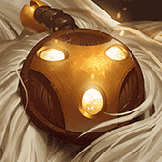












 Threats
Threats Synergies
Synergies
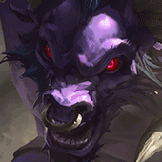
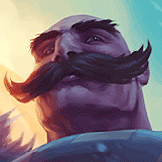
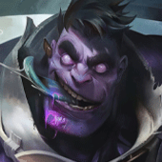
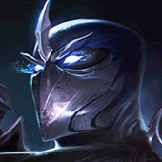
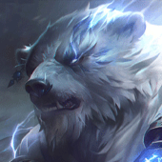
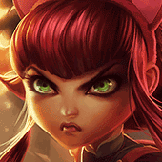
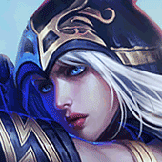
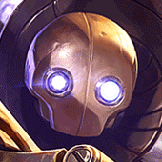

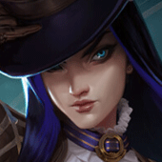
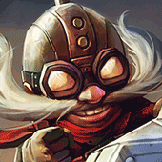
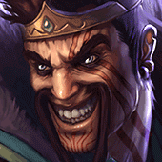
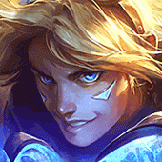
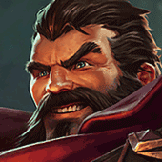
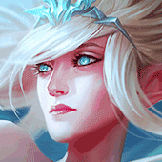
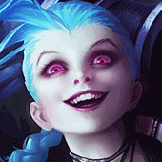
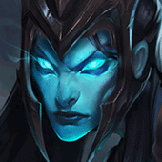
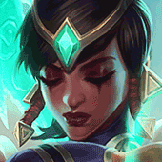
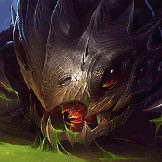
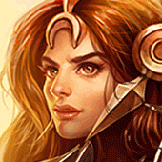
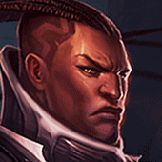
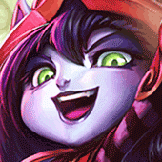

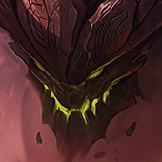
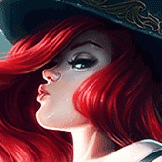
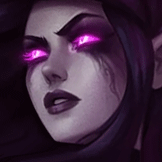
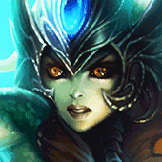
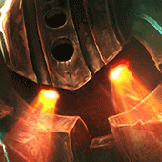
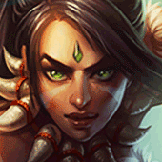
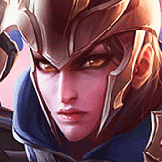
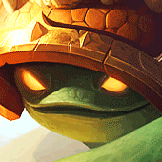
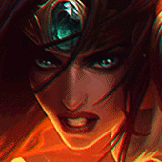
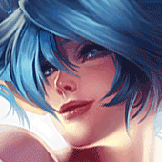
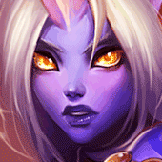
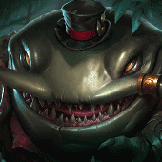
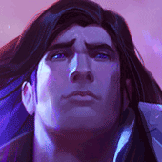
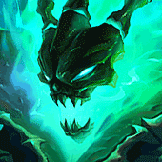
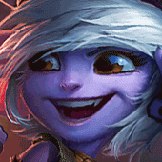
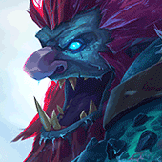

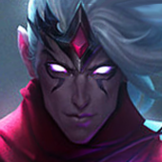
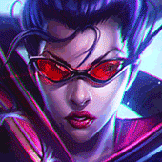
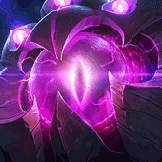
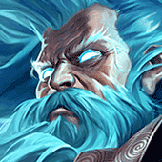
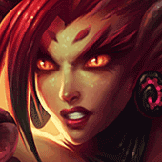
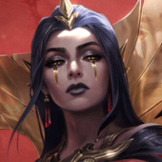
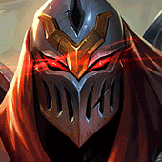










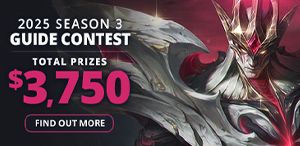

You must be logged in to comment. Please login or register.